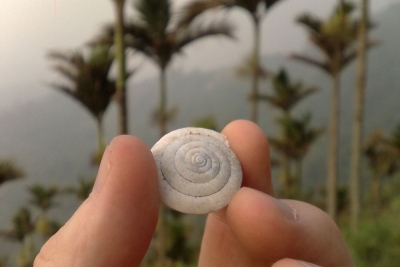
Millions of years ago when the earth was still young, the land that now forms the Himalayas was an ocean floor. A lot has changed since then and today the Himalayas are the world’s highest mountains. They rise to a peak at the summit of Mount Everest – not far short of nine kilometres above sea level. So what turned an ocean floor into a mountain range? The answer is a huge build-up of pressure.
The earth’s surface is formed from gigantic rafts of land, known as tectonic plates. Sixty million years ago the plate on which India lies started moving. It moved northwards towards the plate that the rest of central Asia sits on. In between India and Asia at that time was the sea. And when the two plates crashed together the ocean bed under the sea was crushed. As the Indian plate kept pushing north, the sea floor buckled and folded. One layer of rock was squeezed up and piled on top of another. After sixty million years the effect is dramatic. The sea has long since disappeared and in its place stands a mighty mountain range separating India from the rest of central Asia. The process is still going on and experts think the Himalayas are being pushed slowly upwards, perhaps growing as much as five centimetres a year.
And what about the sea shells? Buried in some of the rock high up in the mountains, climbers have found the remains of shells that once lay on the floor of that ancient sea.
Picture Credit : Google



